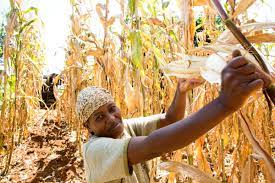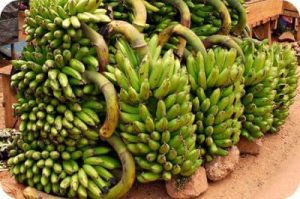
#OutToLunch East Africa’s starving population calls for an agricultural paradigm shift
#OutToLunch East Africa’s starving population calls for an agricultural paradigm shift By Denis Jjuuko An eye-popping report in the East African, a regional newspaper caught my attention this week. It claimed that “some 50 million people in East Africa are hungry after two years of failed rains.” It further added that as people were starving, “Tanzanian maize exports are stuck at the border due to red tape. ”Yet there is nothing Africans claim to be good at and what gives them a comparative advantage than agriculture. If agriculture is our thing and we are so good at it, how can 3.5% of the continent’s population in just one region be starving to death due to lack of food because there is no rain? And also, like we saw last week, how can red tape at borders make it difficult for people to get food from a neighbouring country? If you drive through many parts of Uganda, you will see children with every symptom of malnutrition. On some of my travels in the countryside, I sometimes wonder what people actually eat. You can drive for many kilometres without seeing any garden anywhere. If you get off the main roads into the villages, you see a small garden here and there. You would think that if we can’t do agriculture at a commercial scale, at least let every home have a sizeable garden for their household needs. This was the case before. But Africa can’t continue to miserably fail at what they claim to be good at and instead resort to depending on organisations like the World Food Programme. A whole region like East Africa where we sing about political federation all the time can’t be lacking enough food to feed its citizens. East Africa is home to many water sources among which Lake Victoria and River Nile — two of the world’s biggest such water sources in the world. But if you drive a kilometer or two from the banks of River Nile, you see kids who haven’t had a proper meal in days. And in shops, you will see food imported from Egypt grown using the same water from River Nile. One of the reasons given for lack of food on the continent is usually drought due to poor rainfall. But where water is so near people, there aren’t any plans to use irrigation to water the plants in East Africa. Because of changes in the climate, droughts are increasingly going to be the norm rather than the exception. However, East Africa or Sub Saharan Africa for that matter isn’t the only region in the world facing climate changes. How come we can manage to import food from other regions which are also suffering from climate change? In 2019, Sub-Saharan Africa imported food worth a whopping USD43 billion and it is estimated to reach USD100 billion by 2030. This is a worrying trend for a region that looks at itself as an agricultural one that raises fundamental questions. Why can’t we be food exporters instead of importers? How come regions with equally severe weather patterns able to export food to Sub Saharan Africa? What is it that we are doing wrong? We are told that if you do the same thing over and over again with the same results, then there is need to change. One of such things that we need to wean ourselves off is rainfed agriculture and adopt technologies that can make us food secure. More harsh weather resistant food varieties must be developed and adopted by communities. Adoption of modern and affordable irrigation systems is important too. Talking about agriculture in fancy hotels while eating imported wheat flour and vegetables is something African policy makers must cease doing and get to the ground and help their populations adopt modern farming techniques. Villages can be organized in a way that they farm what they are good at using varieties that resistant to weather conditions but also by adopting better irrigation technologies. Post-harvest losses must also be avoided. In many parts of Africa, we can’t even preserve what we grow. In countries like Uganda, you find that during certain seasons, fruits and vegetables are so many that farmers are giving them away for free and yet within a month, there is so much scarcity for the same stuff. What is so difficult in creating a warehouse with enough coolers to keep vegetables for a few more weeks? What is so difficult in starting a tomato paste plant in a region known for growing tomatoes? Instead if you visit our supermarkets, they are full of imported tomato paste from outside Africa. The writer is a communication and visibility consultant. djjuuko@gmail.com

